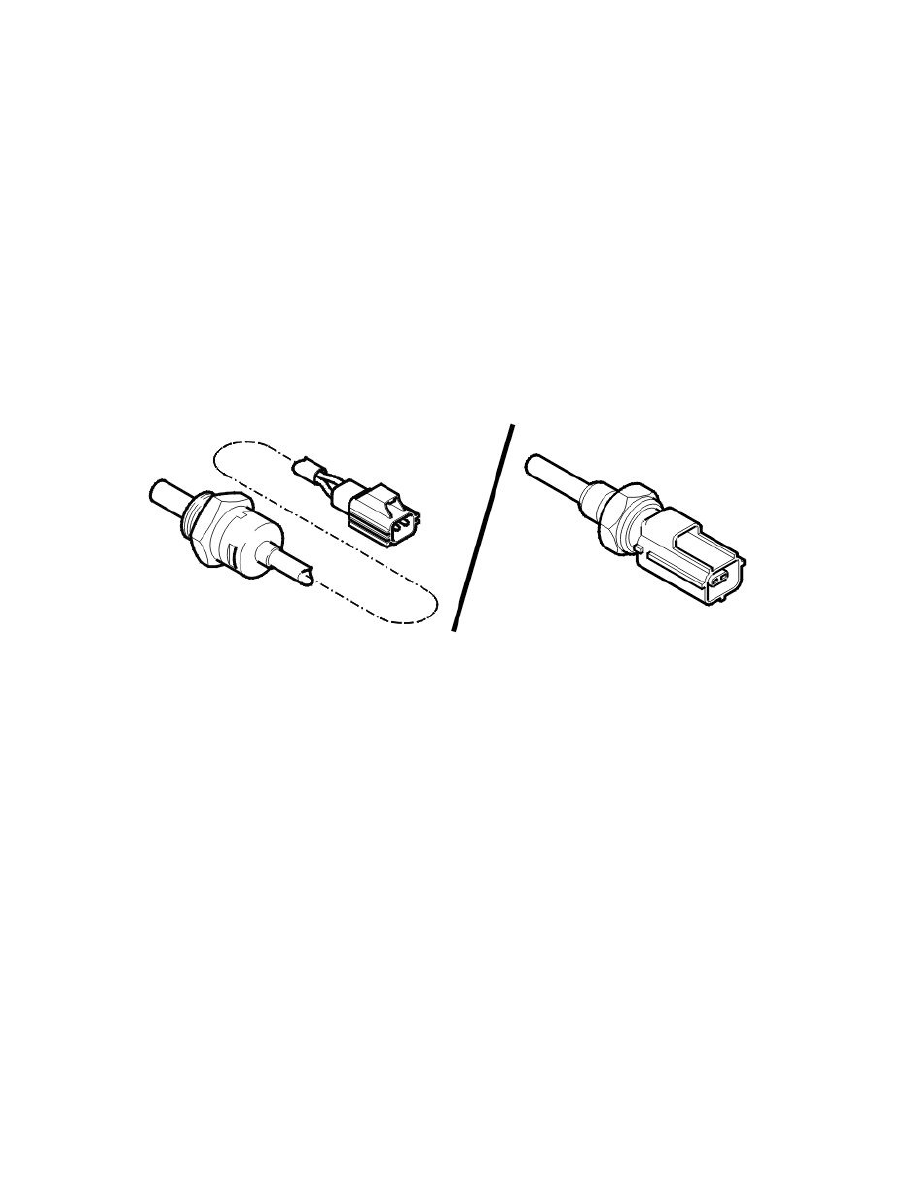XC90 AWD L6-2.9L Turbo VIN 91 B6294T (2004)

heated oxygen sensors (HO2S).
The engine control module (ECM) can diagnose the rear heated oxygen sensor. The signal can be read using VIDA.
Preheating of the heated oxygen sensors (HO2S)
The heated oxygen sensor (HO2S) only functions above a certain temperature, approximately 300 °C. The normal operating temperature is between
300-900 °C. The heated oxygen sensors (HO2S) are electrically pre-heated so that operating temperature is rapidly reached. This also ensures that the
heated oxygen sensors (HO2S) maintain a normal operating temperature and to prevent condensation which could damage the heated oxygen sensor
(HO2S).
The heater element in the probe consists of a positive temperature coefficient (PTC) resistor. The system relay supplies the heater element with voltage.
The element is grounded in the engine control module (ECM). When the control module grounds the connection a current flows through the PTC
resistor. When the heated oxygen sensor (HO2S) is cold, the resistance in the PTC resistor is low and a large current will flow through the circuit. The
current from the Engine Control Module (ECM) is pulsed at first to prevent condensation damage to the heated oxygen sensor (HO2S). Depending on
the temperature, allowances are made for factors such as the dew point. As the temperature in the PTC resistor rises, the resistance rises, the current falls
and switches in stages to a constant current. The pre-heating time for the front heated oxygen sensor (HO2S) is short, approximately 20 seconds.
Probe preheating begins as soon as the engine is started. The heater element heats the heated oxygen sensors (HO2S) to approximately 350 °C. The
probes maintain this as a minimum temperature.
The engine control module (ECM) can diagnose the heater element.
Engine coolant temperature (ECT) sensor
The engine coolant temperature (ECT) sensor checks the temperature of the engine coolant. The temperature of the engine coolant is required so that the
engine control module (ECM) can regulate:
-
the injection period
-
the idle speed
-
the engine cooling fan (FC)
-
the ignition advance
-
engagement and disengagement of the A/C compressor
-
diagnostic functions.
The sensor is a negative temperature coefficient (NTC) type which is supplied with power from the control module (signal) and is grounded in the
control module.
The resistance in the sensor changes depending on the temperature of the coolant. Depending on the resistance in the sensor, a voltage (signal) is
transmitted to the Engine Control Module (ECM). At 0° C, the voltage is approximately 4.0 V. At 100° C the voltage is approximately 0.5 V. Low
temperature results in high voltage (high resistance), high temperature in low voltage (low resistance).
The engine coolant temperature (ECT) sensor is located beside the thermostat.
The engine control module (ECM) can diagnose the engine coolant temperature sensor. The sensor value can be read off using VIDA.
Engine cooling fan (FC)/engine cooling fan (FC) control module
